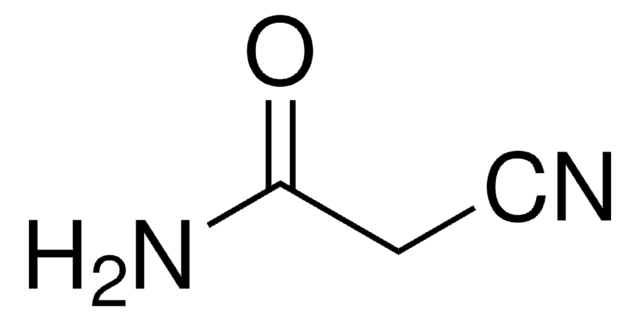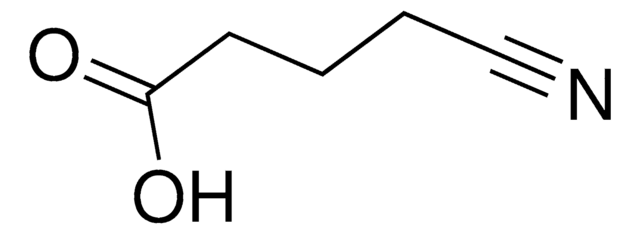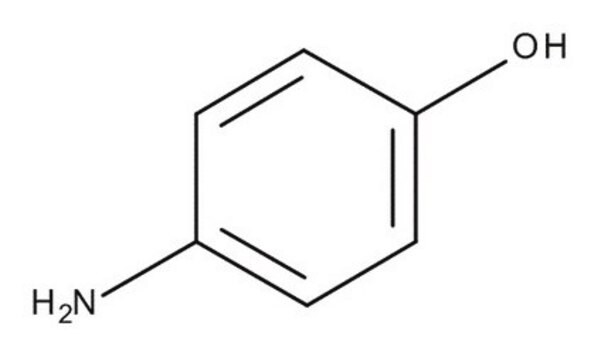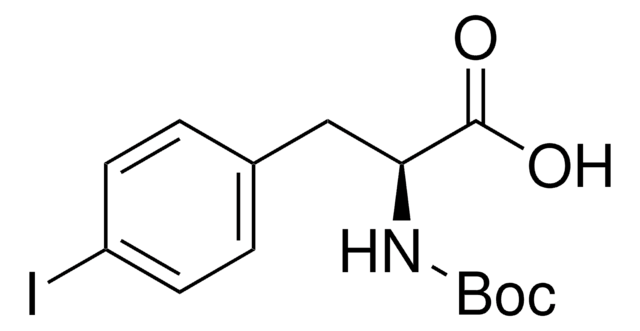Key Documents
C88505
Cyanoacetic acid
99%
Synonim(y):
2-Cyanoacetic acid, Cyanoethanoic acid, Malonic mononitrile, Monocyanoacetic acid
About This Item
Polecane produkty
ciśnienie pary
0.1 mmHg ( 100 °C)
Poziom jakości
Próba
99%
Postać
crystals
tw
108 °C/0.15 mmHg (lit.)
mp
64-70 °C (lit.)
rozpuszczalność
H2O: 50 mg/mL, clear, colorless to very faintly yellow
ciąg SMILES
OC(=O)CC#N
InChI
1S/C3H3NO2/c4-2-1-3(5)6/h1H2,(H,5,6)
Klucz InChI
MLIREBYILWEBDM-UHFFFAOYSA-N
Szukasz podobnych produktów? Odwiedź Przewodnik dotyczący porównywania produktów
Zastosowanie
- Along with acetic anhydride for cyanoacetylation of various pyrroles, indoles, and aniline derivatives. It can also be used in other reactions such as cyclizations, syntheses of coumarins and other heterocycles.
- To prepare of key intermediate via Knoevenagel condensation in the total synthesis of 5-acetamido-substituted melatonin derivatives as MT3 receptor ligands.
- In the synthesis of aminopyrrolinone derivatives by reacting Ugi adducts of cyanoacetic acid and aromatic aldehydes.
Hasło ostrzegawcze
Danger
Zwroty wskazujące rodzaj zagrożenia
Zwroty wskazujące środki ostrożności
Klasyfikacja zagrożeń
Acute Tox. 4 Inhalation - Acute Tox. 4 Oral - Eye Dam. 1 - Skin Corr. 1B
Zagrożenia dodatkowe
Kod klasy składowania
8A - Combustible corrosive hazardous materials
Klasa zagrożenia wodnego (WGK)
WGK 1
Temperatura zapłonu (°F)
224.6 °F - closed cup
Temperatura zapłonu (°C)
107 °C - closed cup
Środki ochrony indywidualnej
Eyeshields, Faceshields, Gloves, type P3 (EN 143) respirator cartridges
Wybierz jedną z najnowszych wersji:
Masz już ten produkt?
Dokumenty związane z niedawno zakupionymi produktami zostały zamieszczone w Bibliotece dokumentów.
Klienci oglądali również te produkty
Nasz zespół naukowców ma doświadczenie we wszystkich obszarach badań, w tym w naukach przyrodniczych, materiałoznawstwie, syntezie chemicznej, chromatografii, analityce i wielu innych dziedzinach.
Skontaktuj się z zespołem ds. pomocy technicznej



![1,8-Diazabicyclo[5.4.0]undec-7-ene 98%](/deepweb/assets/sigmaaldrich/product/structures/120/564/5b373e23-1624-489c-8efb-692de0f96ffb/640/5b373e23-1624-489c-8efb-692de0f96ffb.png)






